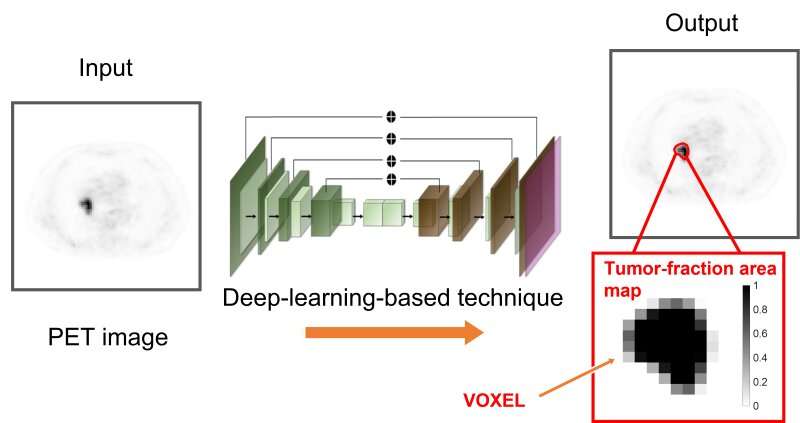Deep learning improves interpretation of tumors

NIBIB-funded engineers are using deep learning to differentiate tumors more accurately from normal tissue in positron emission tomography (PET) images. Standard analysis of PET scans count black regions as tumor and white regions as normal. The team at Washington University in St. Louis has developed a technique using statistical analysis and deep learning to determine the extent of tumors at their margins where the images show various shades of gray.
PET images consist of what are known as voxels, which are 3-dimensional pixels in space. Current methods count these gray regions as either tumor or normal.
“The key idea is that we don’t just learn if a voxel belongs to the tumor or not,” said team leader Abhinav Jha, Ph.D., assistant professor of biomedical engineering in the McKelvey School of Engineering Jha said. “The voxel can be part tumor and part normal. The novelty is that we can estimate how much of the voxel is the tumor.”
The research aims to provide more accurate information about the tumor to guide treatment decisions and improve patient care.
“It’s a quality-of-life issue for patients,” said Jha. “Helping to answer those questions would be satisfying and rewarding.”
Source: Read Full Article
